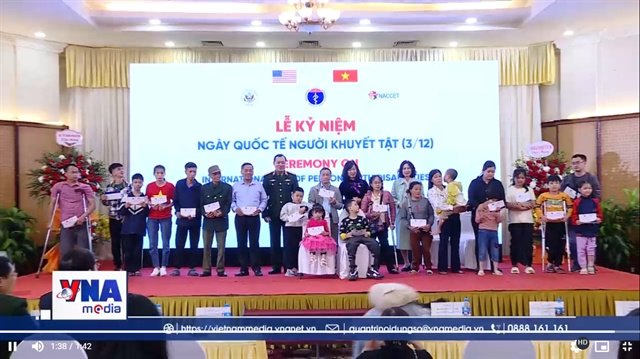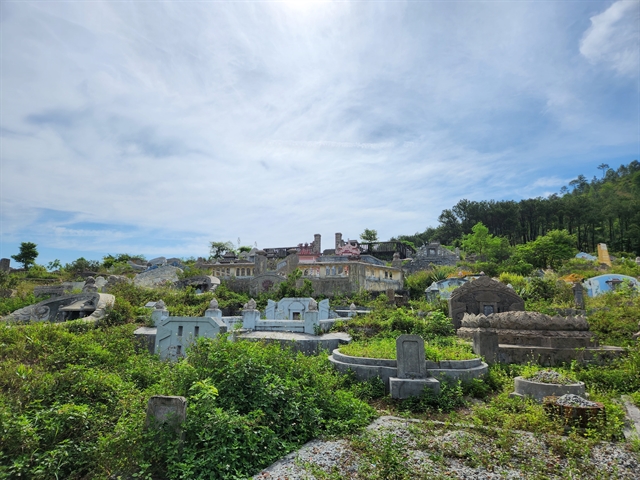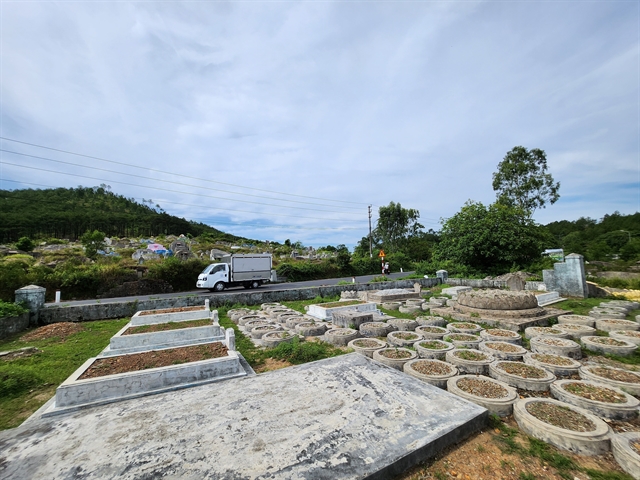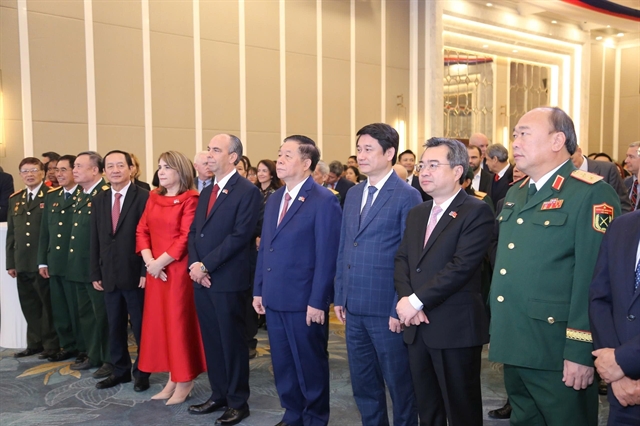 Society
Society

 |
| Graves are densely scattered on the Bân mountain national heritage site, Huế City. — VNA/VNS Photos Mai Trang |
THỪA THIÊN-HUẾ — The amount of land for cemeteries in Thừa Thiên-Huế province is large, and urban planning experts have recommended that local authorities rearrange this area to allocate land resources for socio-economic development.
The province currently has over 9,500 hectares of cemetery land. This is an exceptionally large area compared to other provinces and cities nationwide.
The project of a coastal road and a sea cross bridge in Thuận An township started in 2022. This is the largest transportation project in the coastal province of Thừa Thiên-Huế, aiming to promote links between provincial key economic zones and the national coastal traffic system.
However, the project is facing the risk of delays due to complications in compensation and relocation of graves.
According to the Huế City Land Development Centre, residents in Hải Dương Commune and Thuận An Ward have not agreed with the proposed relocation plan of about 900 graves and the compensation price offered by the city authorities, as well as with the new relocation sites.
Bùi Ngọc Chánh, the centre's deputy director, said that Hải Dương Commune is affected by the project, with 600 graves, including 30 complex architectural graves, which were solidly constructed with an approximate cost of VNĐ1 billion (US$42,580) per grave.
Under the current regulations, the maximum compensation for each grave is only between VNĐ250-300 million, which poses difficulties in mobilising people to relocate the graves.
For many years, Huế has struggled to find solutions and resources to implement the Ngự Bình Cultural Park project, as it requires the clearance of over 38 hectares of cemetery land, including more than 176,700 graves.
According to the Huế City Land Development Centre, this project needs over one trillion VNĐ for land clearance and nearly 56 hectares for relocating the graves. Due to the large amount of funds, the city is studying a plan to divide the project into smaller phases and gradually implement the relocation.
Phú Vang District has beautiful beaches and large lagoons for developing tourism and resorts. However, numerous cemeteries in the coastal region affect investment attraction efforts.
The province has agreed on a list of investment promotion projects covering an area of over 2,000 hectares in the district. An estimated 110,000 graves covering 107 hectares need to be relocated to carry out these projects.
Lê Hữu Ngọc, vice chairman of the Phú Vang District's People's Committee, said that residents do not have the habit of cremation. For a long time, they have chosen a convenient land spot, even in their garden, to bury their loved ones.
As a result, small scattered cemeteries have gradually appeared, interspersed within residential areas and agricultural and forestry land. This situation has become a pressing issue for the locality in terms of ensuring water sources for daily living, impacting the environmental landscape, and attracting investment.
Huế Environment and Urban Works Joint Stock Company has been entrusted with managing two public cemeteries in the province, with an area of over 184 hectares. However, only nine remain unused.
The company's deputy general director Lê Vĩnh Thắng said the remaining land reserve for burial in these two cemeteries is currently 14,000 graves. Among them, the north public cemetery in Hương Hồ Ward, Huế, will reach full capacity in the third quarter of this year, while the other in the south of the city can only meet the demand until the end of 2024.
In Phú Vang District, an average of 400 burial plots are needed each year, and the existing cemeteries in some coastal communes are nearly fully utilised. With the plan not to expand and gradually close these cemeteries by 2030, the local authorities aim to concentrate burial activities in public cemeteries.
According to the Department of Construction, most local cemeteries in the province are developed spontaneously without proper planning and management, which has hindered socio-economic development.
 |
| Graves along Ngự Bình Road, Huế City. |
To address this issue, the province has approved the detailed planning work of expanding two cemeteries in the south and north with a total area of 120 hectares. It is projected to accommodate approximately 30,000 graves.
However, so far the progress of construction and expansion of the two cemeteries have been slow.
According to Trương Nguyễn Thiện Nhân, head of the Urban Development and Technical Infrastructure Division, Department of Construction, the province's current policy is to gradually relocate the small spontaneous cemeteries to the planned concentrated cemetery area, to limit the prolonged existence of cemeteries along the coastline, and to attract investment in cemetery parks with synchronised infrastructure, ensuring civilisation and environmental hygiene to meet the process of economic and social development as well as the criteria of a large urban area in the future.
Many localities in the province have very large cemetery land areas, such as Phú Lộc District, with 1,475 hectares, Phú Vang District, with nearly 2,340 hectares, Quảng Điền District - 1,490 hectares, and Phong Điền District with more than 1,990 hectares.
In many localities, the cemetery land area is larger than residential land.
This reality poses a challenge for the province in finding comprehensive and fundamental solutions, especially in persuading people to change their perception and gradually transition to cremation as an alternative form.
Thừa Thiên-Huế is striving to become a centrally-governed city by 2025. According to regulations, major cities must have a cremation rate of approximately 30 per cent.
Nhân said that cremation is a civilised and cost-effective form of funeral that is becoming increasingly popular. Cremation brings many benefits, such as addressing the shrinking productive land resources, reducing pressure on cemeteries, solving environmental pollution issues, and disease control.
However, in reality, many issues regarding beliefs and spirituality still need further analysis and communication.
One effective approach is implementing policies that encourage individuals to change their habits, customs, and long-standing societal practices, Nhân said.
The cremation technology was only applied at the An Lạc Viên facility in the southern public cemetery at the end of 2022. Hợp Lực Investment Joint Stock Company established it with a planned capacity of two cremation furnaces out of a total of six furnaces. Since its operation, this company has only conducted nearly 100 cases, which is a very low rate.
The province is calling for social investment in implementing cemetery park projects.
However, investors have not continued constructing cremation facilities as planned due to low demand for the service. — VNS


.jpg)

